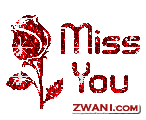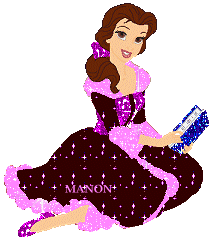CHAPTER 10
Producing electronic material
- multiple choice
- short answer
- jumbled sentence
- crossword
- matching/ordering
- gap-fill
CHAPTER 10
Producing electronic material
- multiple choice
- short answer
- jumbled sentence
- crossword
- matching/ordering
- gap-fill
Technology-based courseware
![]()
CD-ROM or Compact Disc Read-Only Memory looks exactly like an audio CD but contains multimedia files that are programmed to use text, images, audio and video to provide interactivity. CD-ROMs are primarily designed for learners to work on alone as follow up to a lesson, either in a school self-access centre or at home. They can include features such as allowing learners to choose their own path through the CD-ROM materials by making their own lesson plans. Many coursebook CD-ROMs also have testing materials incorporated, so that learners can check their own progress, as well as a grammar reference section and mini-dictionary.
![]()
DVD or Digital Versatile Disc similar to CD-ROMs in that a variety of data can be stored on them but they have much greater storage capacity than CD-ROMs. DVDs are usually used as an alternative to video cassettes, which are becoming increasingly outdated. There are several types of activities that can be done to integrate a CD-ROM into the class :
- In the single computer classroom or school, pairs of learners can take turns to do a few CD-ROM activities.
- If the teacher has access to a data projector and one computer, CD-ROM or DVD content can be projected onto a screen for the whole class to view and work on together, with learners taking turns to take control of the computer mouse.
- If the school has a computer room or self-access centre, the teacher can program in regular short sessions, for example once a week or fortnight, in which learners work alone or in pairs on CD-ROM materials during class time.
![]()
Computer-based testing, online testing, e-assessment… all of these terms refer to a phenomenon which has become increasingly visible in English language teaching in the last few years, that of taking test via a computer rather than on paper. Here are some examples :
- Learners can be given a diagnostic test on a computer before they start a course. This assesses their language levels in the skills of reading, writing, listening and even in discrete item pronunciation, as well as in grammar and vocabulary.
- Learners can take simple progress tests on CD-ROM. These tests will be based on the work that the learners have been doing in their coursebooks.
- Learners can take internationally recognized examinations on a computer, for example the Internet-based TOEFL Test from ETS.
![]()
Electronic portfolios also called ePortfolios or digital portfolios. A portfolio is considered to be a richer way of assessing students, as it provides a much clearer idea of learner achievements and products than test scores or grades. ePortfolios are becomingly increasingly common in education, especially in secondary schools and further education institutions, reflecting the growing importance of, and access to, technology in our lives, as well as the rise of the electronic job market. A learner applying for a job with a company can send an ePortfolio of work to a prospective employer easily and quickly, and so display a range of skills not reflected in a test score.
![]()
An interactive whiteboard (IWB) is made interactive by being linked to a computer which uses special IWB software. The tree components needed to use an IWB are the whiteboard itself, a computer which has IWB software installed and a data projector which projects the image from the computer screen onto the whiteboard. What makes the interactive whiteboard different from a normal whiteboard is that the teacher uses a special pen (or their finger with some makes of board) to manipulate content on the whiteboard itself, rather than using the mouse to manipulate images on the computer screen, which the teacher can also do. The main advantage of an IWB used with a computer and data projector over a computer and data projector used on their own is that teachers can write on the IWB with their fingers and interact with what is on the screen from the front of the class rather than having to look down to their computers and using the mouse too control the screen.
Online reference tools

· Dictionaries
There are many dictionaries that usually used by learners like bilingual, semi-bilingual or monolingual dictionaries. Traditionally monolingual dictionaries have been used by higher-level learners, but increasingly there is a wide range of monolingual dictionaries that have been written for learners with a lower level of language proficiency. Teacher can find the appropiate dictionary by clicking on terms in popular word processing programs or on web pages. Some electronic dictionaries are also available free online with limited functionality, for example including the definition but not giving teacher the audio. Clearly, these electronic dictionaries provide a powerful resource for learners working on their own in the classroom.
![]()
· Thesauruses
Thesauruses are more suited to the intermediate and advance levels than to the elementary or pre-intermediate levels, where much more language is new to the learners. A thesaurus can be used for writing projects. It can encourage leraners to be more adventurous in their creative writing at the same time as helping them to analyse their output more critically.
![]()
· Concordancers and corpuses for language analysis
A concordancer is similar to a search engine in many respects. Essentially, it is a samll program that can examine large quantities of text for patterns and occurences of particular words or phrases. Corpus can be used for generating test material. It can be used for higher levels. A corpus can serve as a useful reference tool in the classroom for the more intricate example of language use.
Blogs, wikis and podcasts
![]()
· Blogs in language teaching
Blog is essentially a web page with regular diary or journal entries. Blogs used in education is known as edublogs. Edublogs cover a wide range of topics related to education, from musings on educational policy and developments to learner composition. An edublog can be set up by a teacher, by individual learners or by a class. A teacher may decide to use a blog to provide their learners with news and comments on issues, extra reading practice or homework, online links, a summary of a class for learners who were unable to attend, study tips and so on.
A blog set up and maintained by a teacher is known as a tutor blog. The teacher may decide to allow their learners to write comments in the blog. A teacher may encourage their learners to each set up and maintain their own individual blog. These are known as student blogs. Learners can be ask to to post to their blogs, once or twice a week, or however the teacher judges convenient, and content can range from comment on current affair to description of daily activities.
![]()
· Wikis in language teaching
Wiki is a collaborative web space, consisting of a number of pages that can be edited by any user. A wiki is like a public website, or public web page, started by one person, but which subsequent visitor can add to, delete or change as they wish. A wiki lends itself especially well to collaborative writing. The mechanic of using a wiki are relatively simple: learners can add new pages to a wiki, as well as edit to a previous pages.
![]()
· Podcasts in language teaching
Podcast is an audio and /or video file that that is broadcast via the Internet and can be downloaded to a computer or mobile device such as an MP3 player for listening/viewing. There are two main uses of podcasts in teaching. Firstly learner can listen to podcasts made by other hand, secondly, they can produce their own podcasts.








